Frolic with Free-Roaming Deer at Nara, Japan
Japan’s Nara Park is a heaven for animal lovers – especially with over 1, 200 deer roaming freely about the premises!
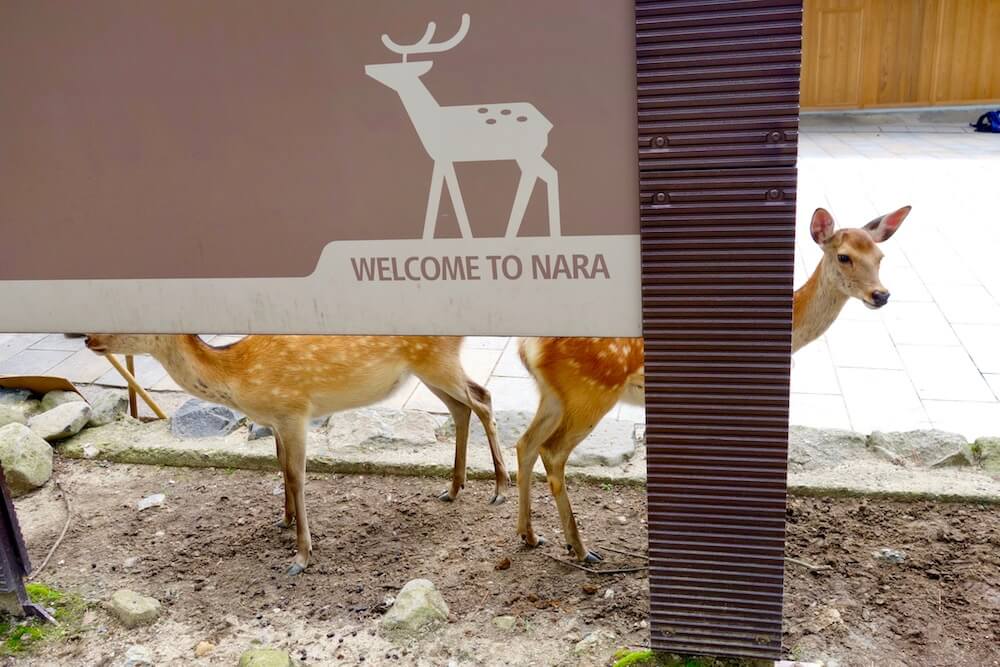
As the legend goes, back in the 700s, Takemikazuchi – the god of Thunder – travelled to Nara whilst riding on a white deer. As such, the deer in Nara were seen as messengers of the gods and accorded a sacred status. Until the 1600s, it was even a capital offence to harm any of these animals! Now, these deer are regarded as National Treasures and have free reign over the town of Nara and the surrounding mountains.
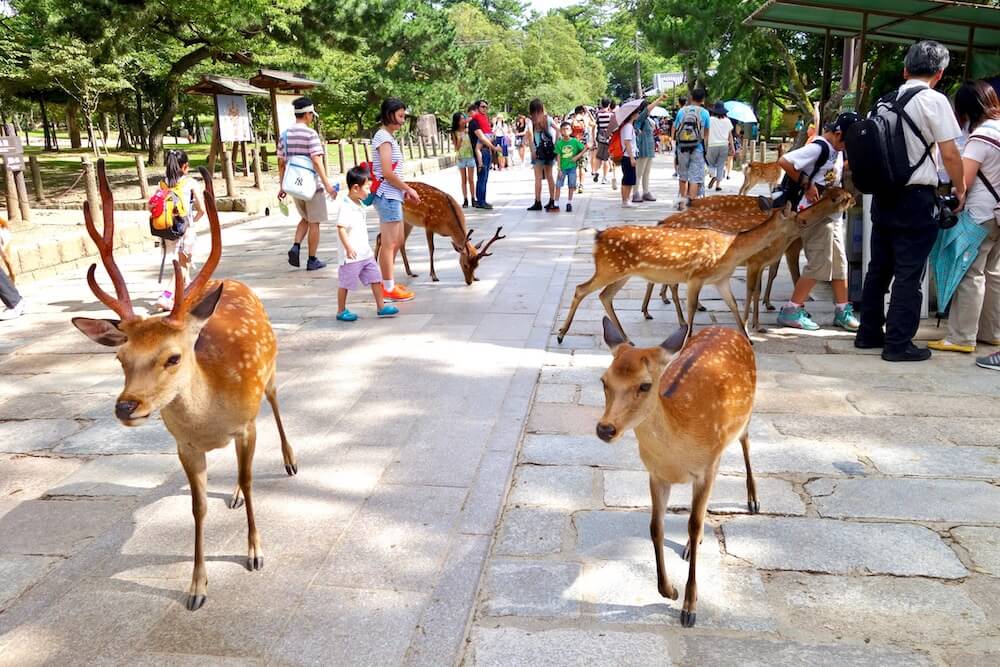
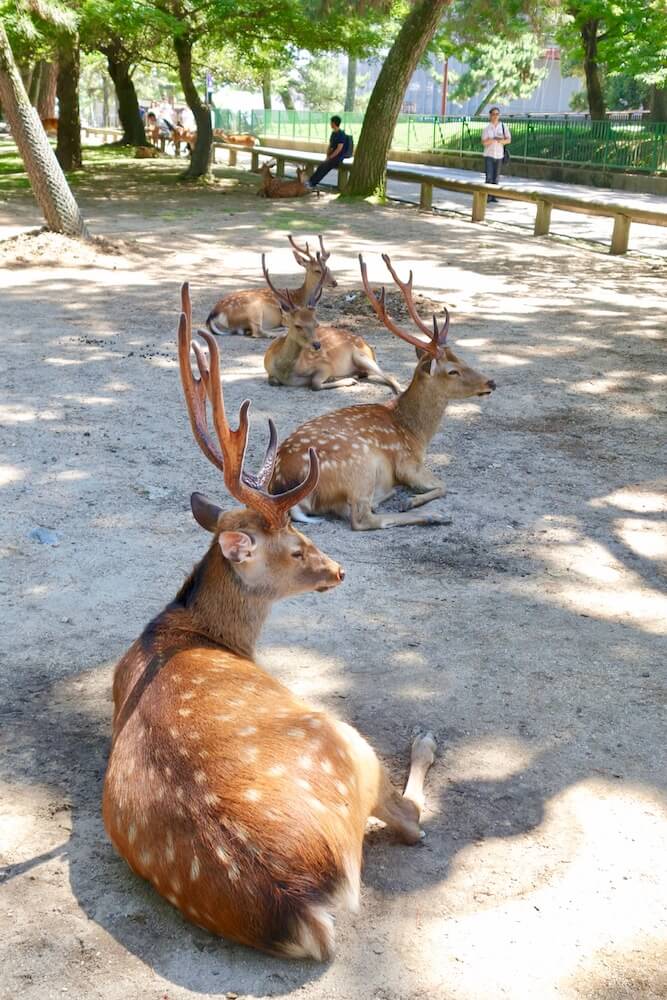
Can you imagine a town where deer roam freely all around the streets? You’ll find them on the roads, in front of the temples, along the shops or lazing in the shade of the trees.
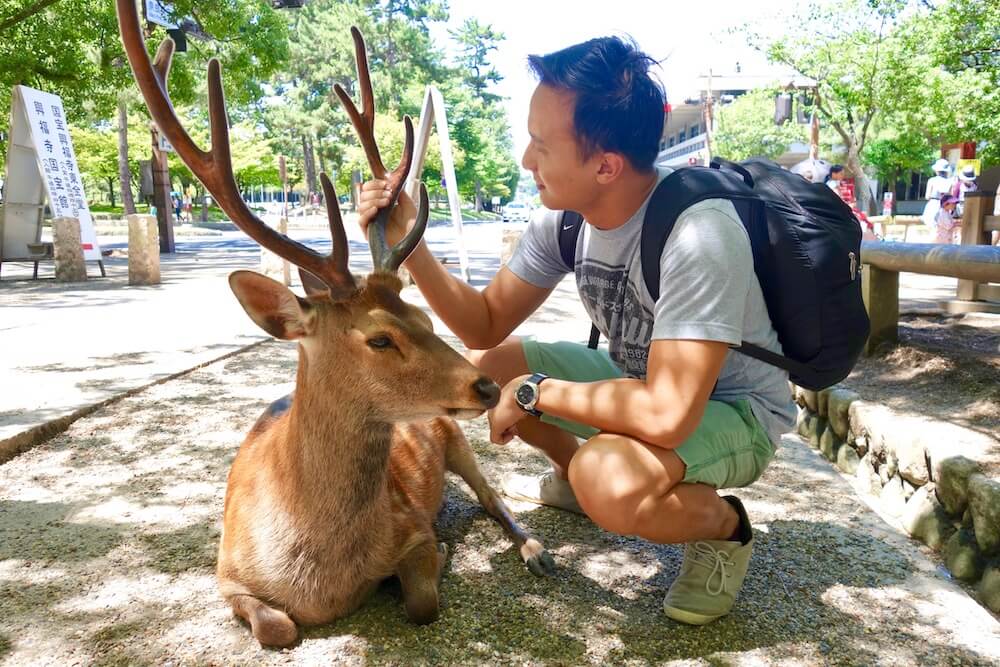
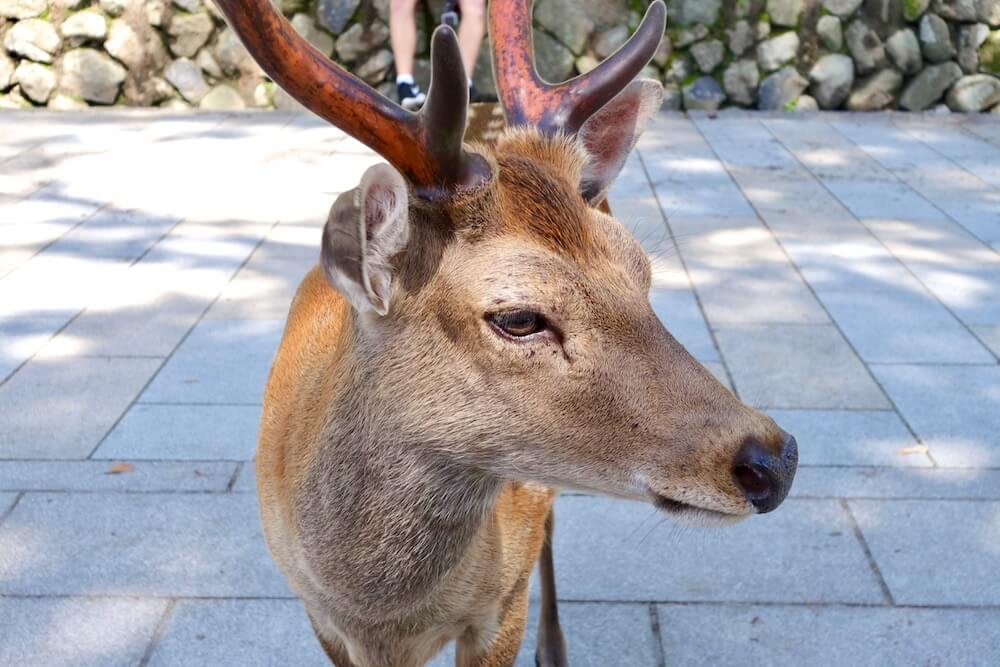
Their antlers grow to quite a formidable height – which might be a rather scary sight for some. Do remember that these deer may be used to the presence of humans, but they’re still fundamentally wild animals.
Exercise caution when approaching them – approach them slowly from the front and should you wish to pat them, slowly reach out your hand for the deer to sniff. If the deer doesn’t turn away, you can proceed to slowly pat the deer. If the deer turns away, however, take it as a sign that it doesn’t wish to be disturbed and act accordingly. Always treat the animals with respect!
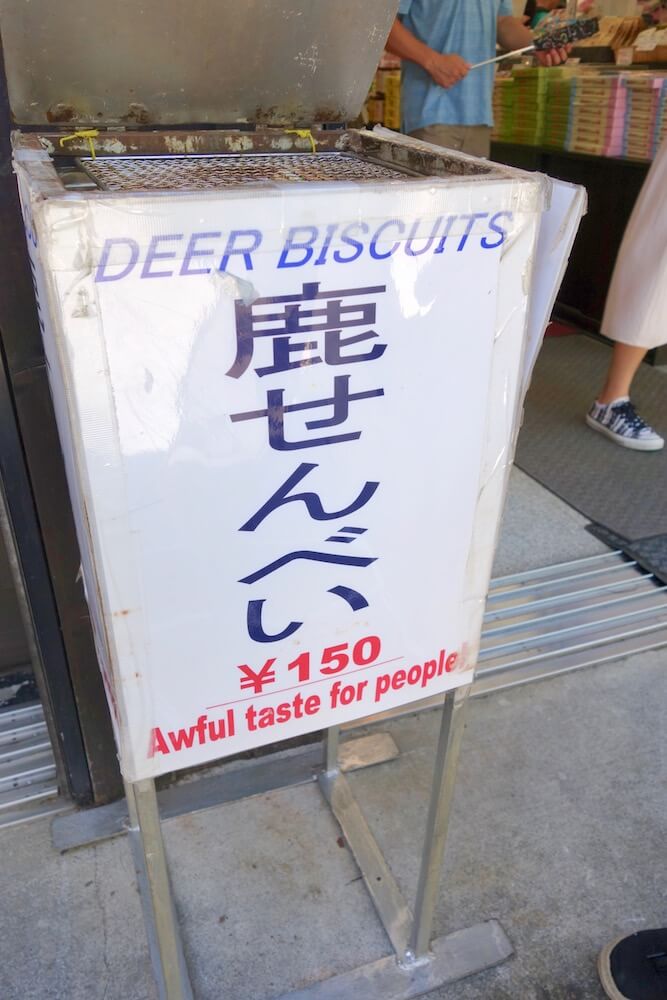
If you wish, you can purchase a packet of deer biscuits (“Senbei”) for 150 yen (~SGD2) to feed the deer. These biscuits are made of wheat flour and rice bran, without any sugar content in them. The biscuits contain only ingredients that are safe for the deer’s consumption; they’re not meant for human consumption so do refrain from trying them! They aren’t harmful in any way but will probably taste rather bland.
In addition, a portion of the proceeds from the sale of deer biscuits goes towards the protection of the deer in Nara.
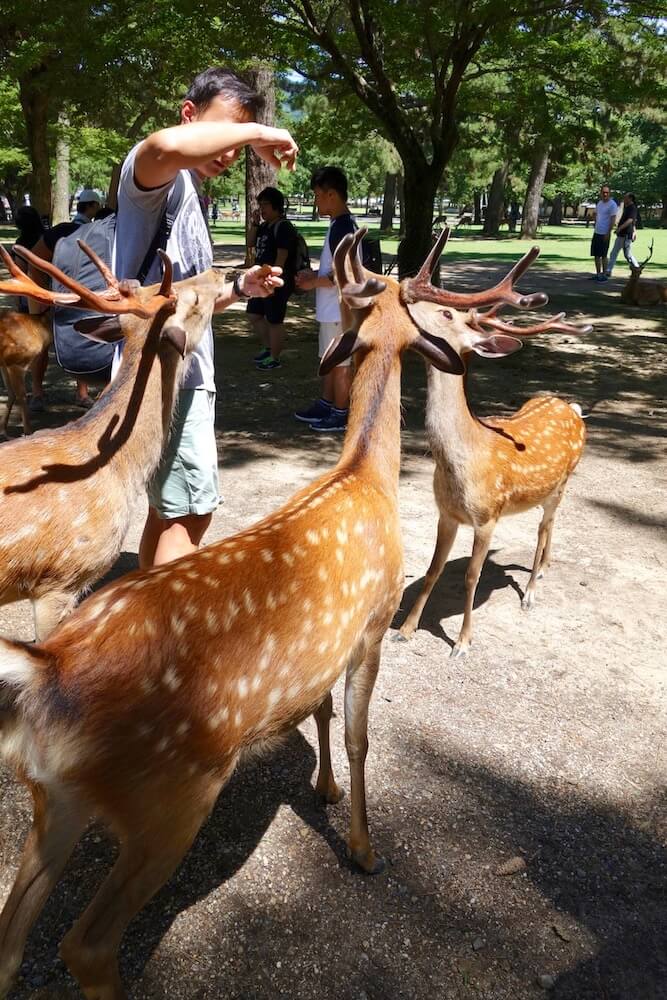
Do be warned: the process feeding them – especially when they have long antlers – might prove to be a little intimidating! Always try to be in a position where you’re facing the deer so as to prevent any deer from approaching you from behind and catching you unaware.
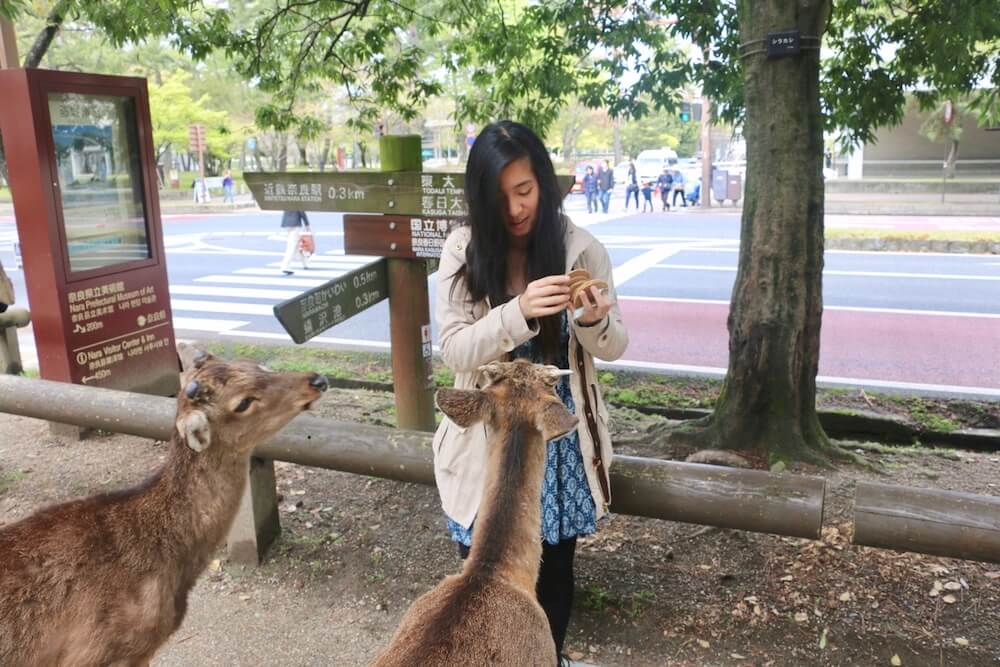
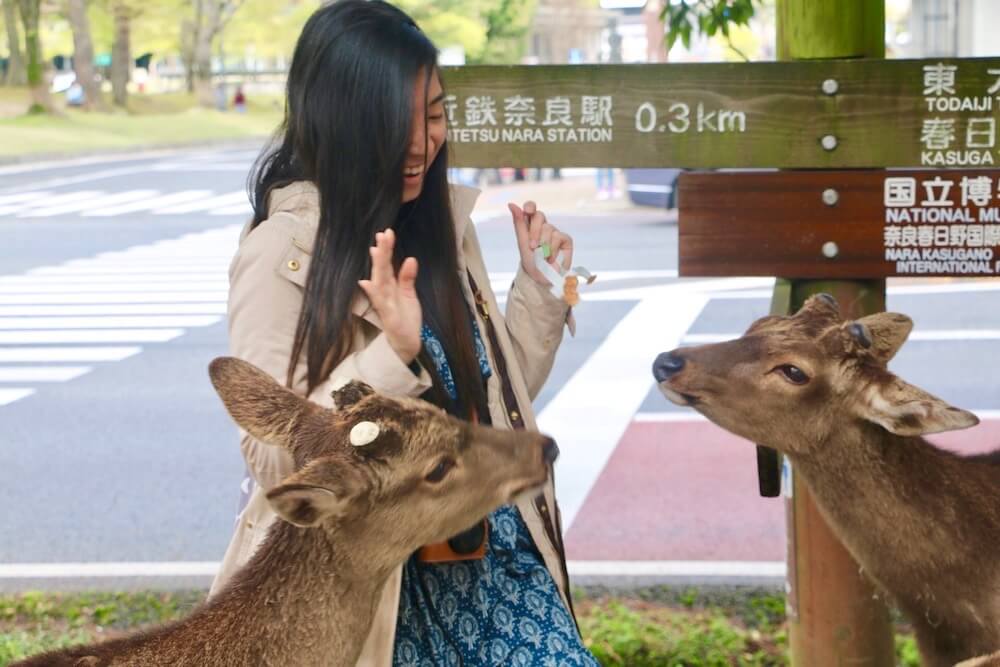
The deer undergo a traditional antler-cutting ceremony in October – hence, visiting the deer park after October might feel a little safer if you don’t wish to encounter their long antlers.
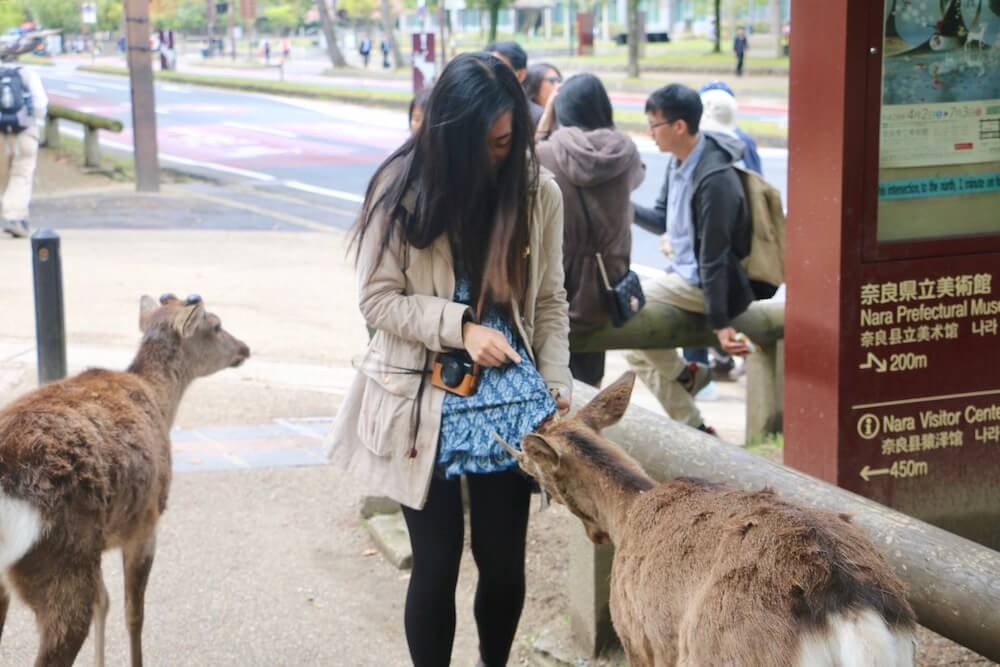
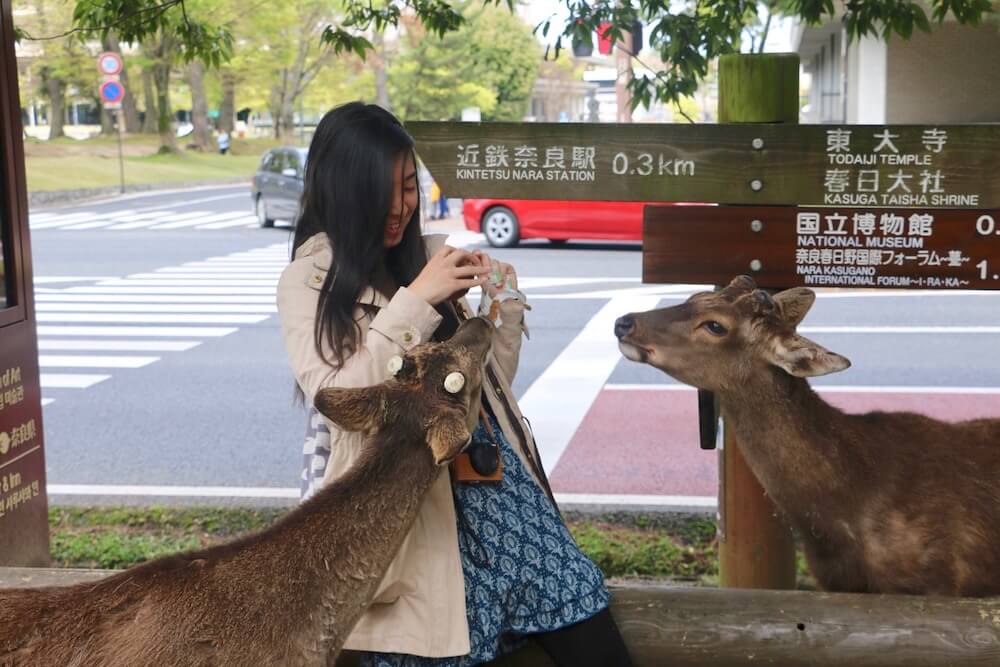
However, the deer have grown accustomed to humans feeding them biscuits and do tend to get a little aggressive. They might get impatient at times and bite on your sleeves or parts of your clothing; my map was grabbed out of my hand and torn by a hungry deer! Some might even try to headbutt you to get your attention.

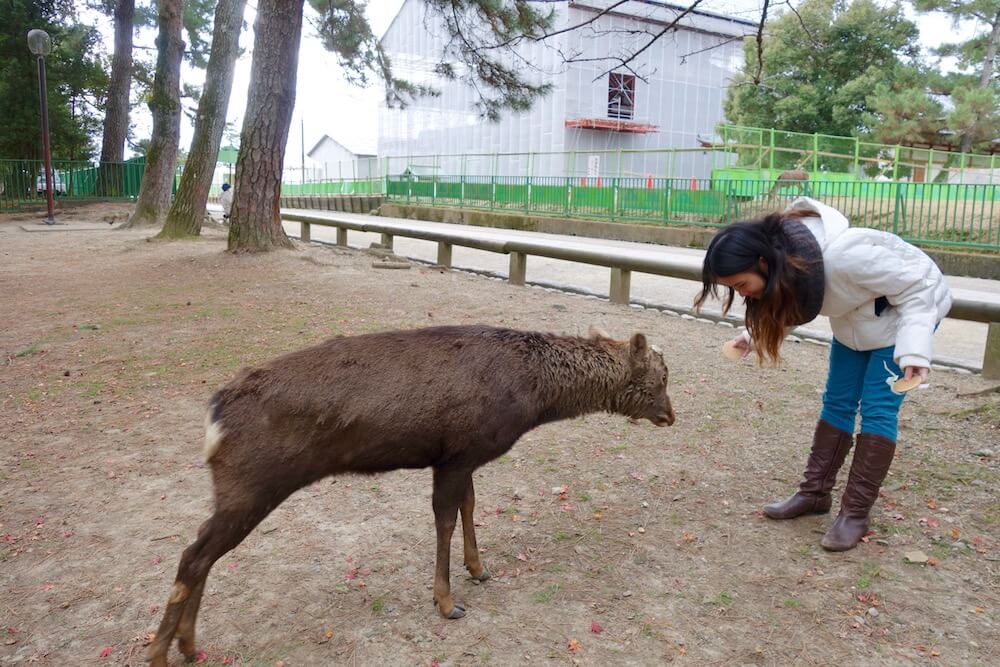
Don’t despair, however – there is an easy way of feeding these deer in a safe (and rather cute!) manner. As with all Japanese, the deer in Nara are also exceedingly polite! If you bow to them, they’ve learnt to bow back and calmly accept a treat in return. Try this trick for yourself!
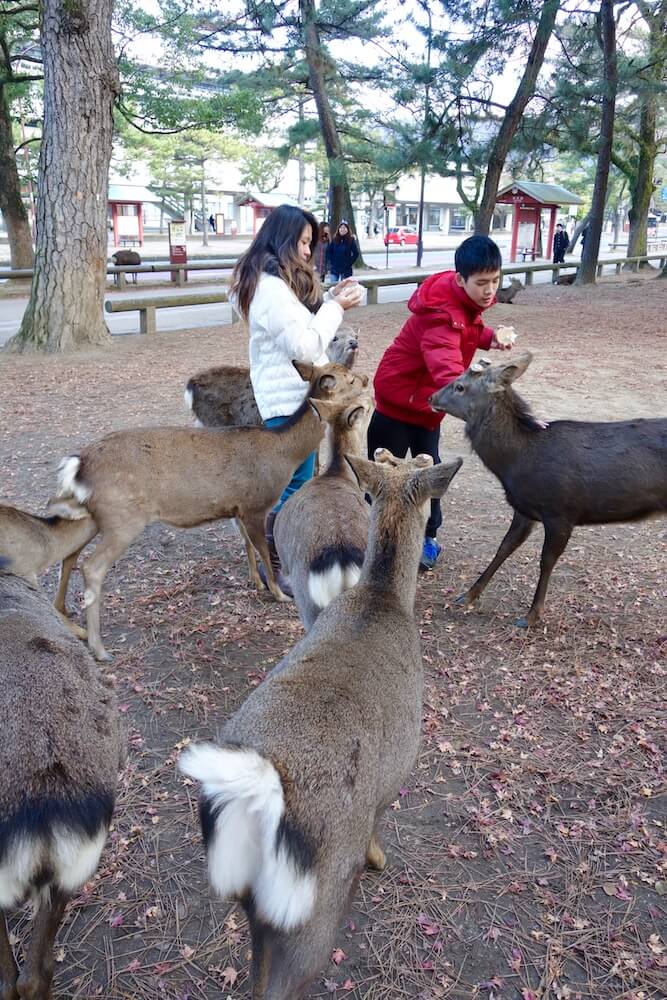
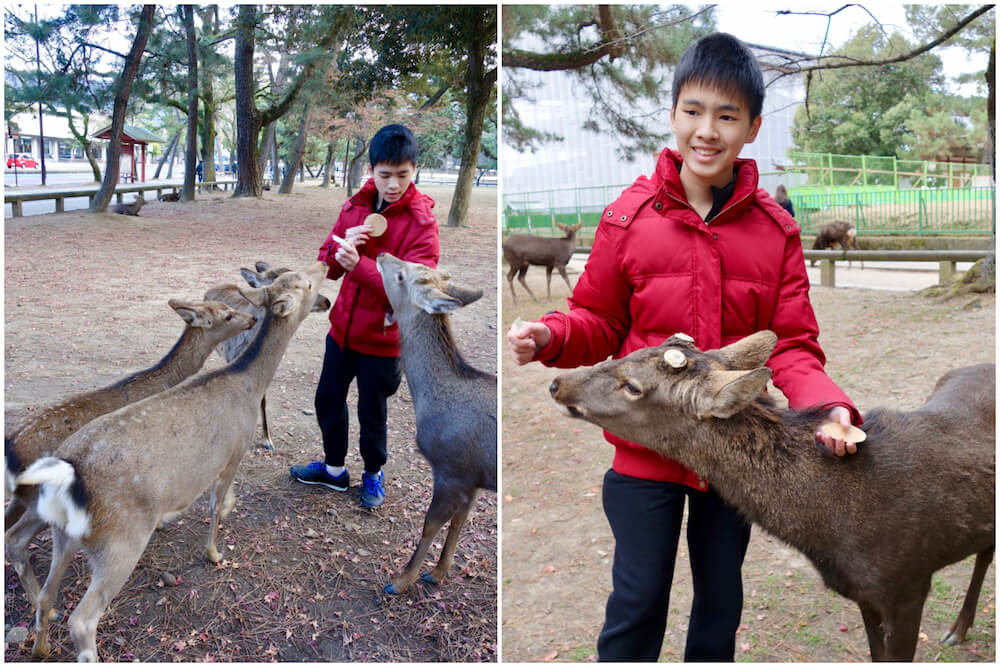
Another way is to visit Nara only from the late morning onwards; by that time, the deer are likely to be satiated after their morning feeding session and will hence be less aggressive.
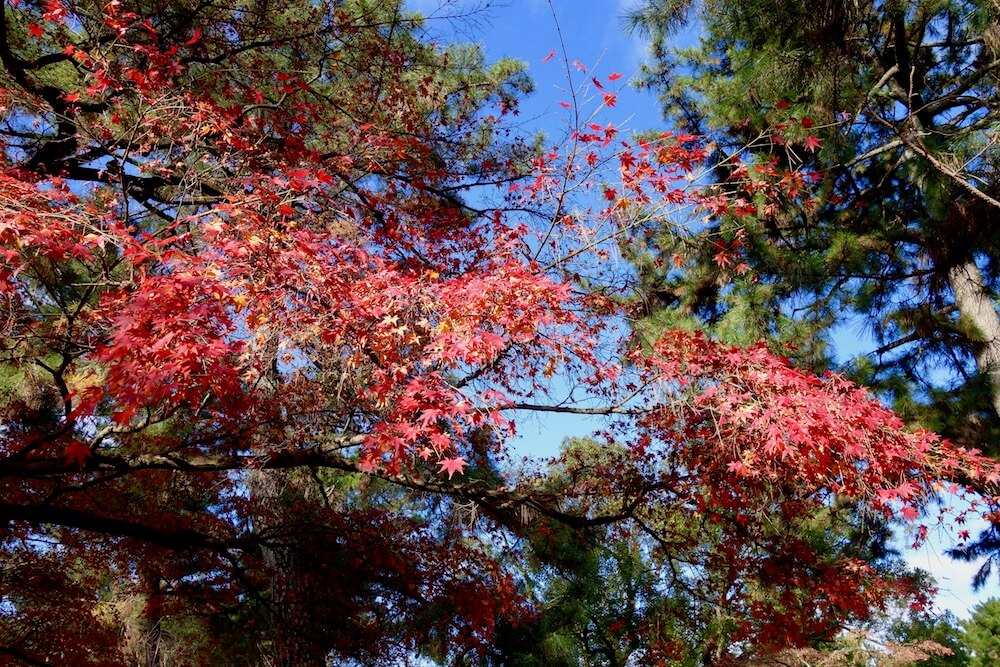
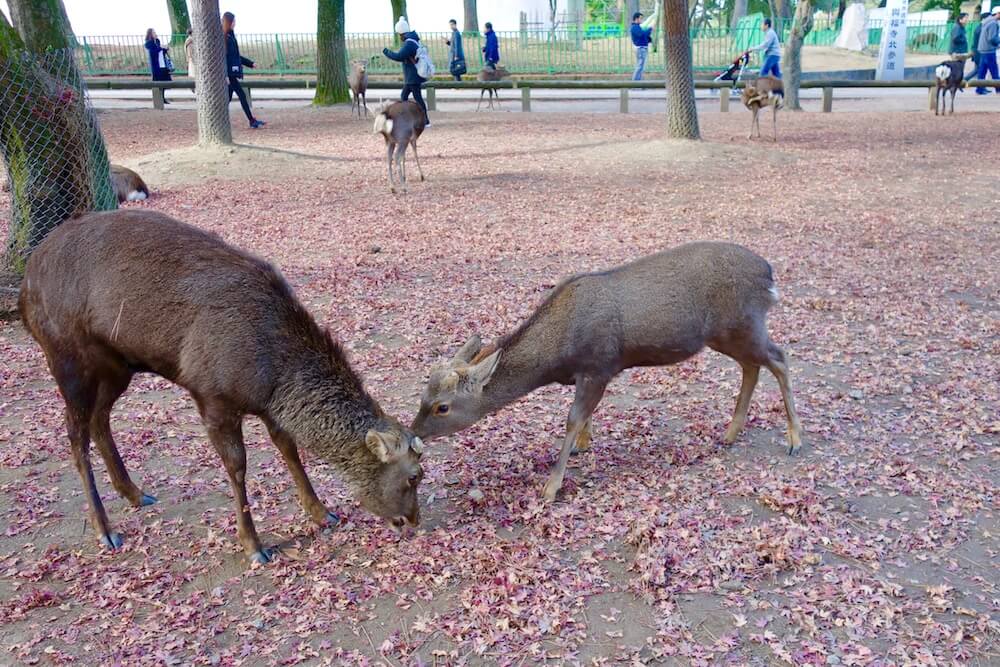
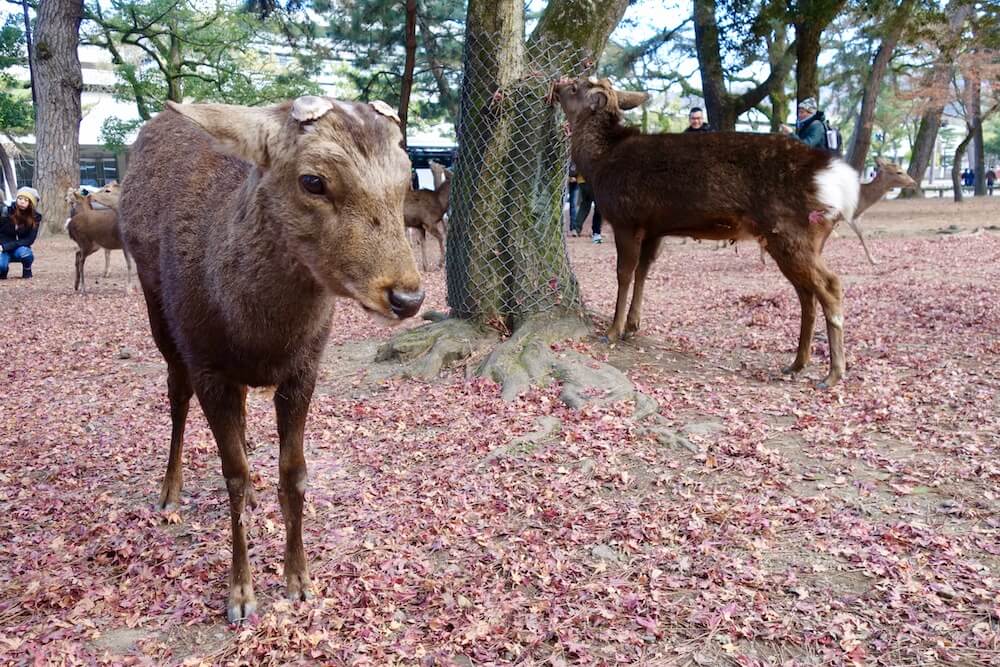
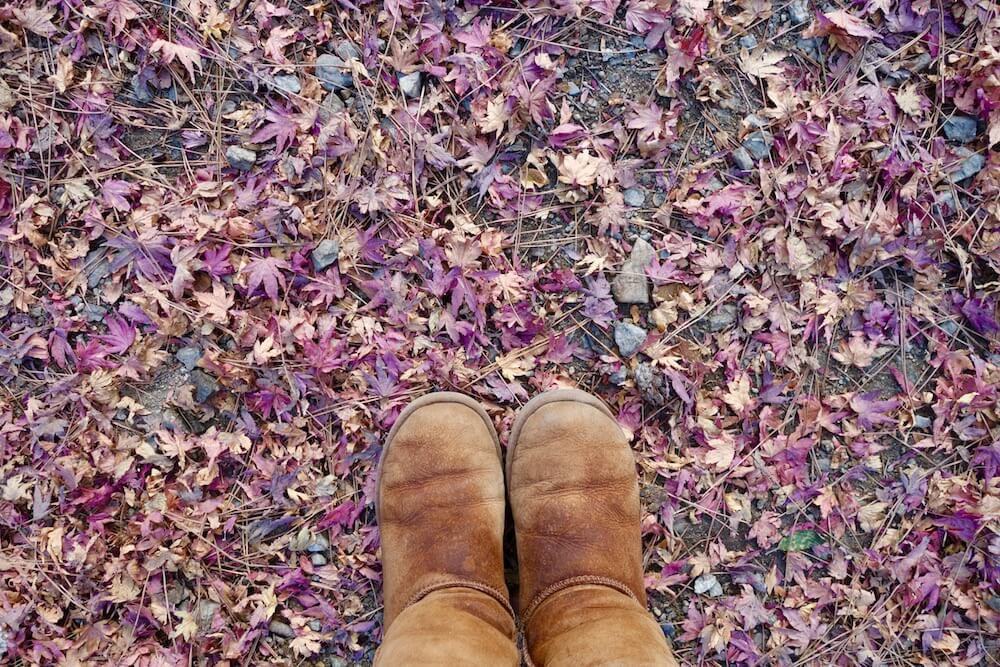
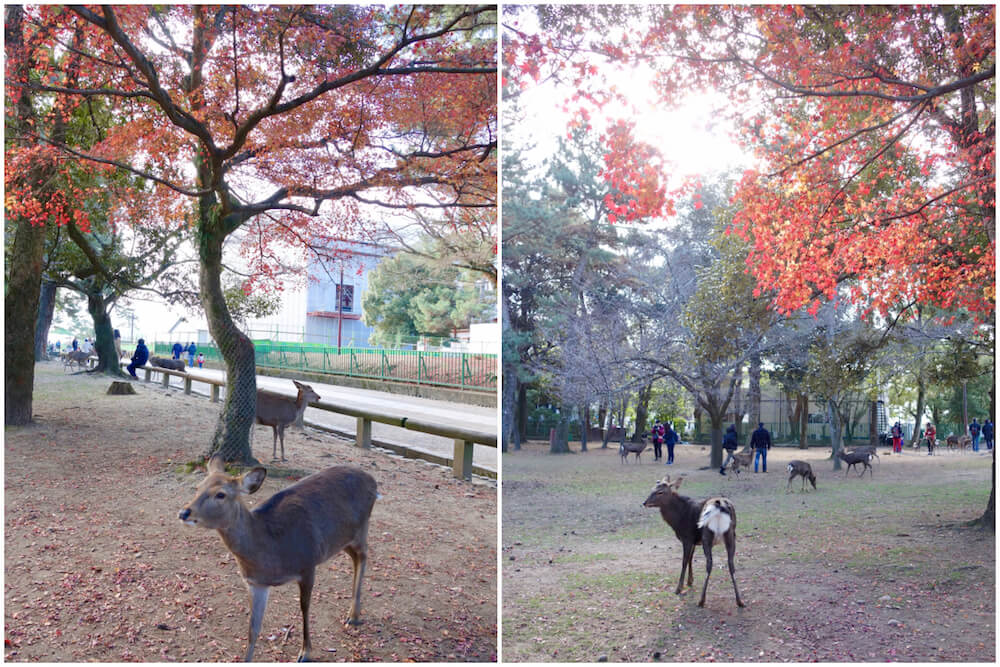
Nara Park can be visited in all seasons; the red and orange foliage of autumn, however, provides a particularly beautiful backdrop.
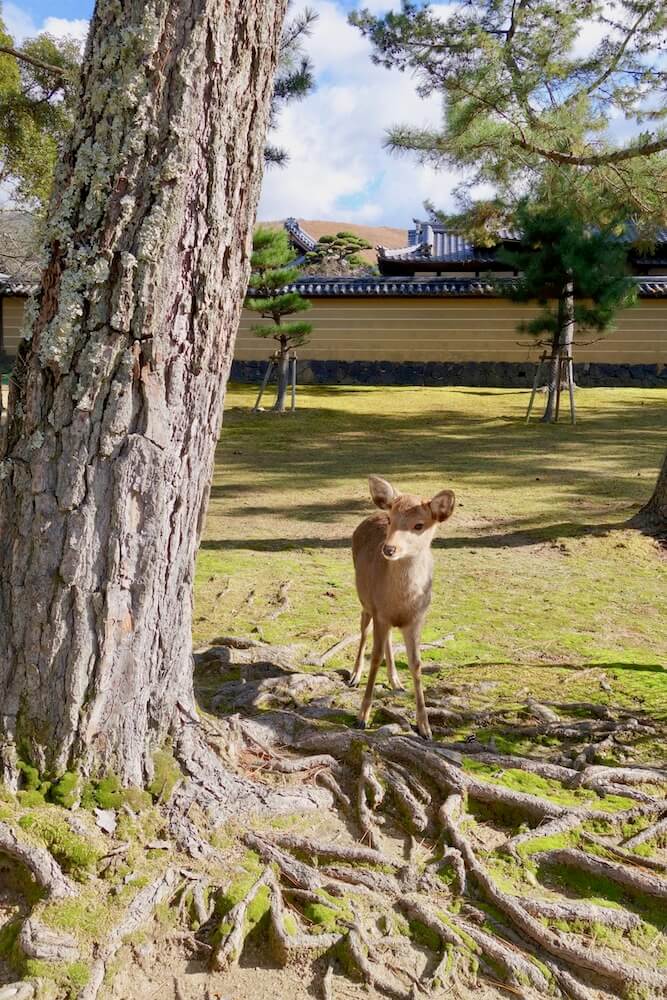
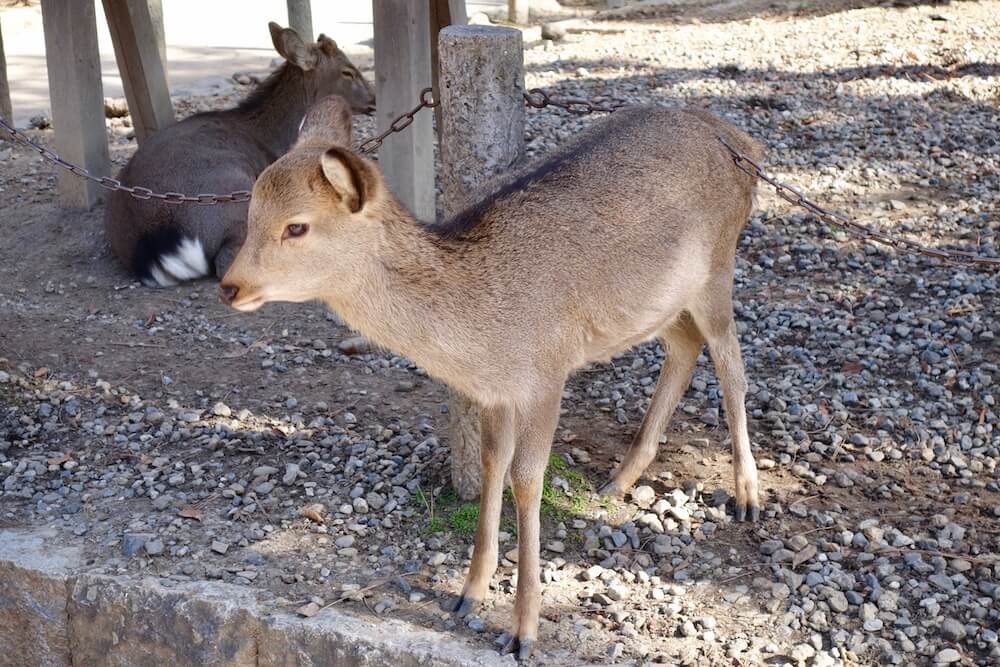
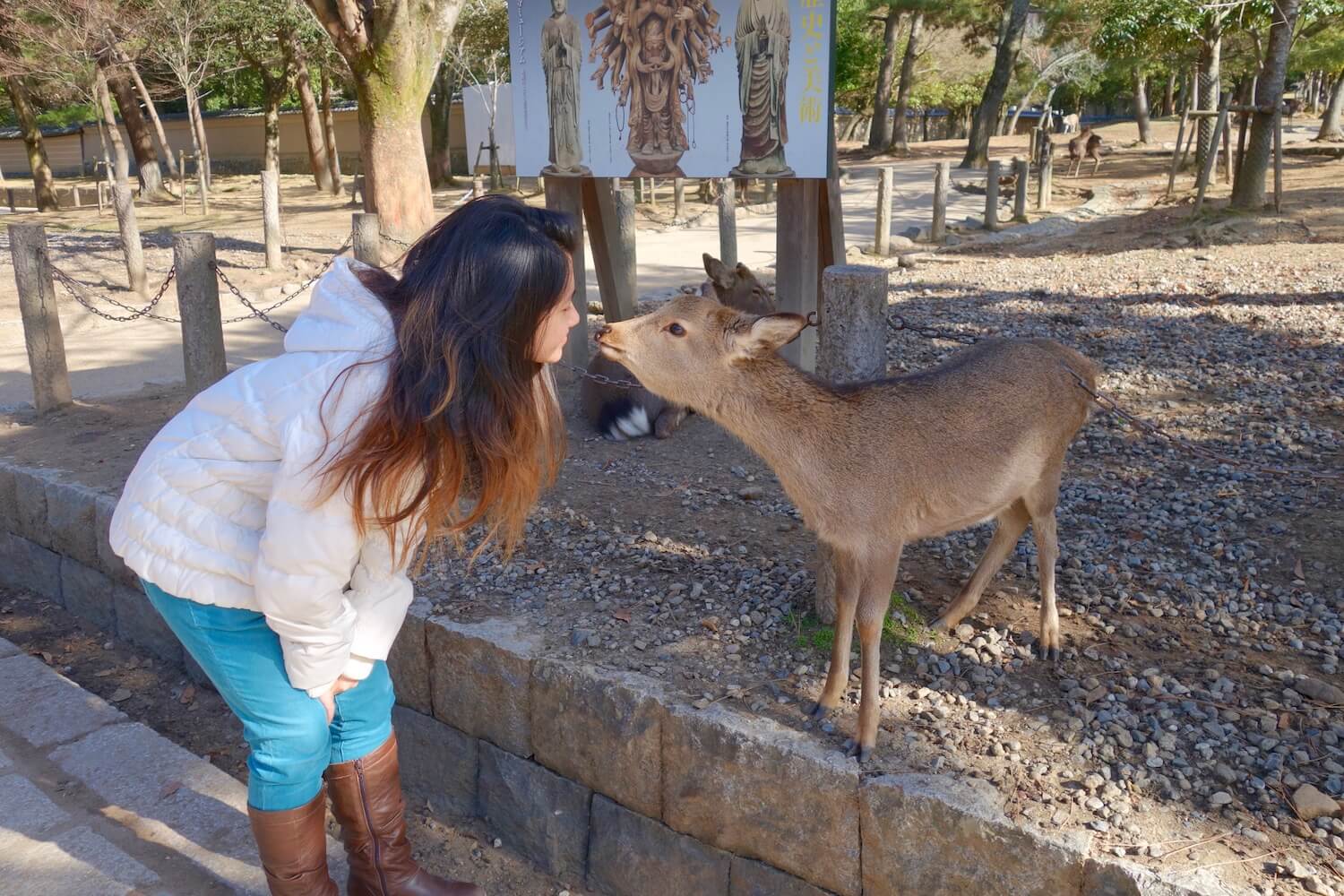
The deer can be really quite endearing when they’re not clamouring for food! If you’re lucky, you might even be able to play with a curious fawn!
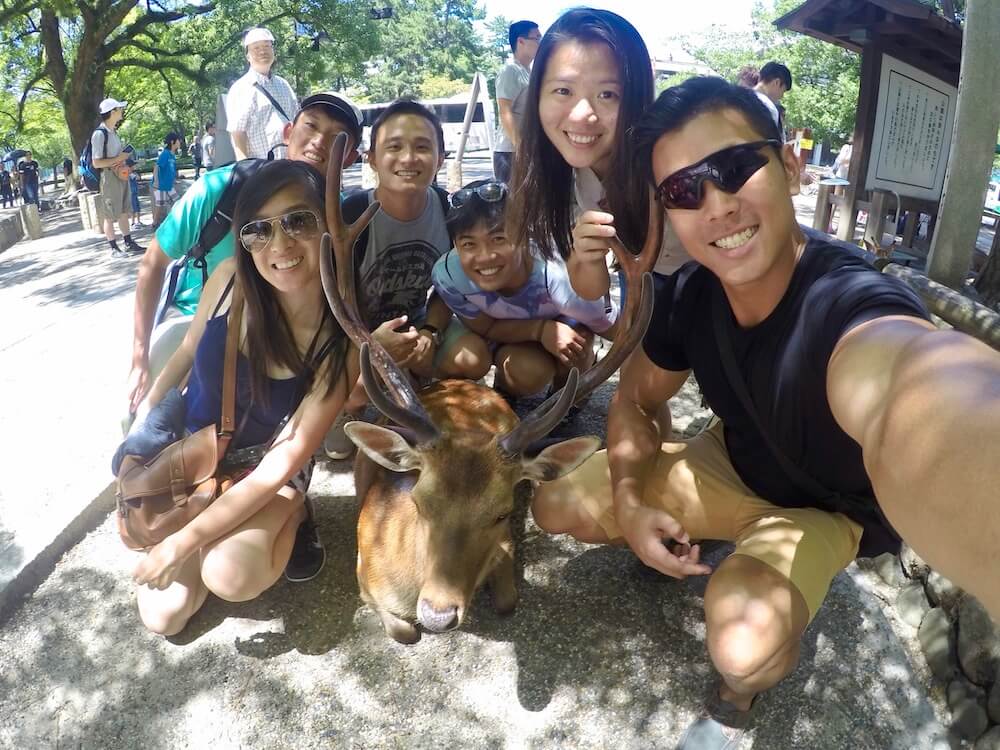
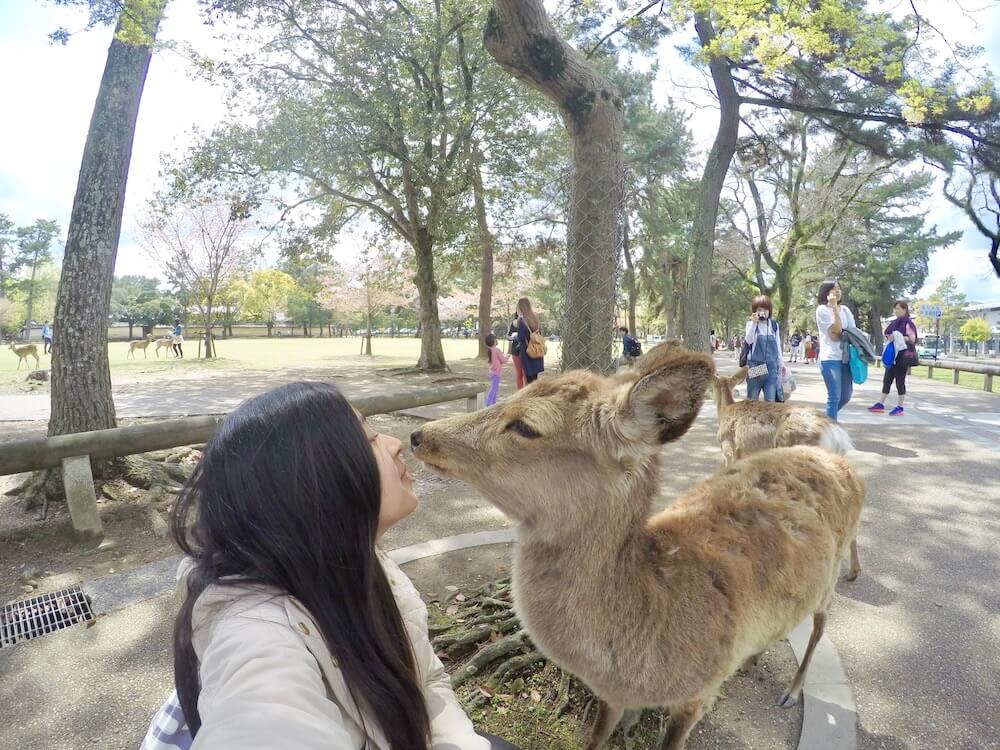
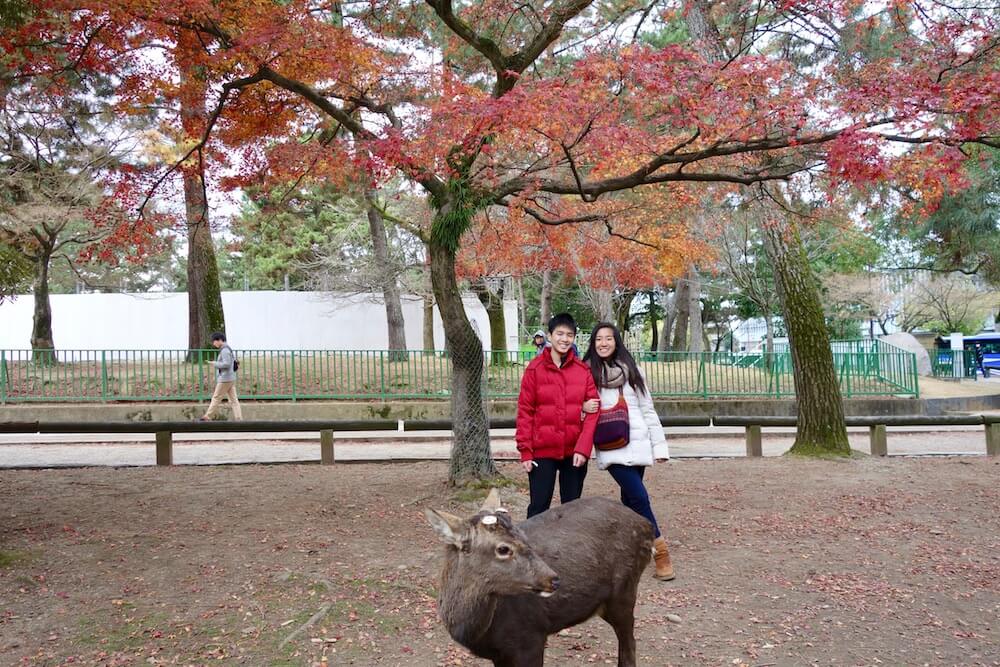
They’re usually quite game for a selfie and might even photobomb your picture!
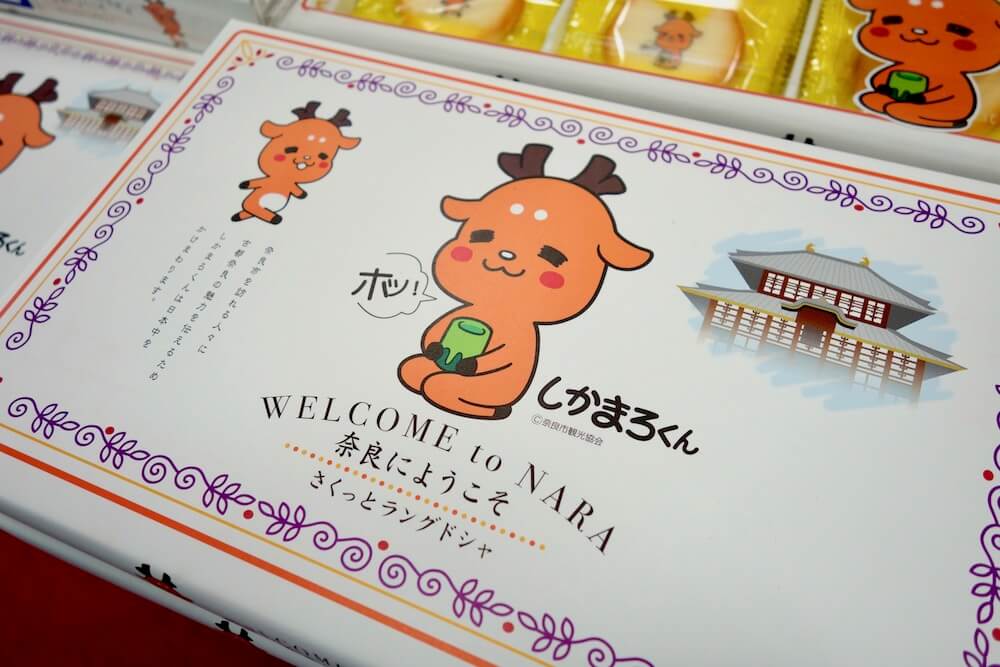
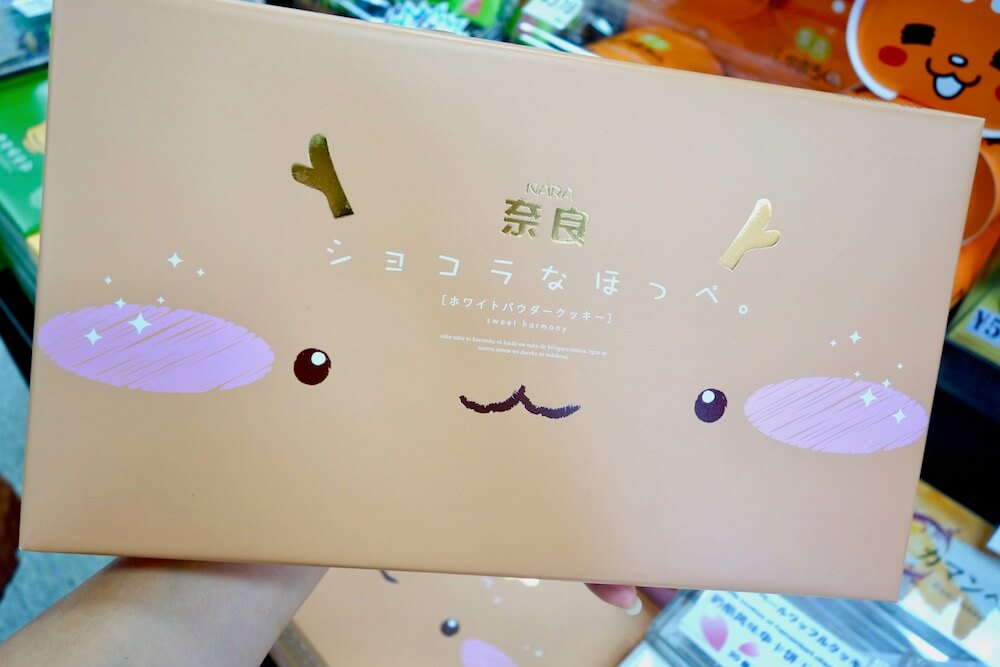
A pedestrianised street lined with restaurants and shops leads from the deer park to Todaiji Temple. You’ll find many deer-themed snacks here, with most shops leaving out water for the deer to drink as well.
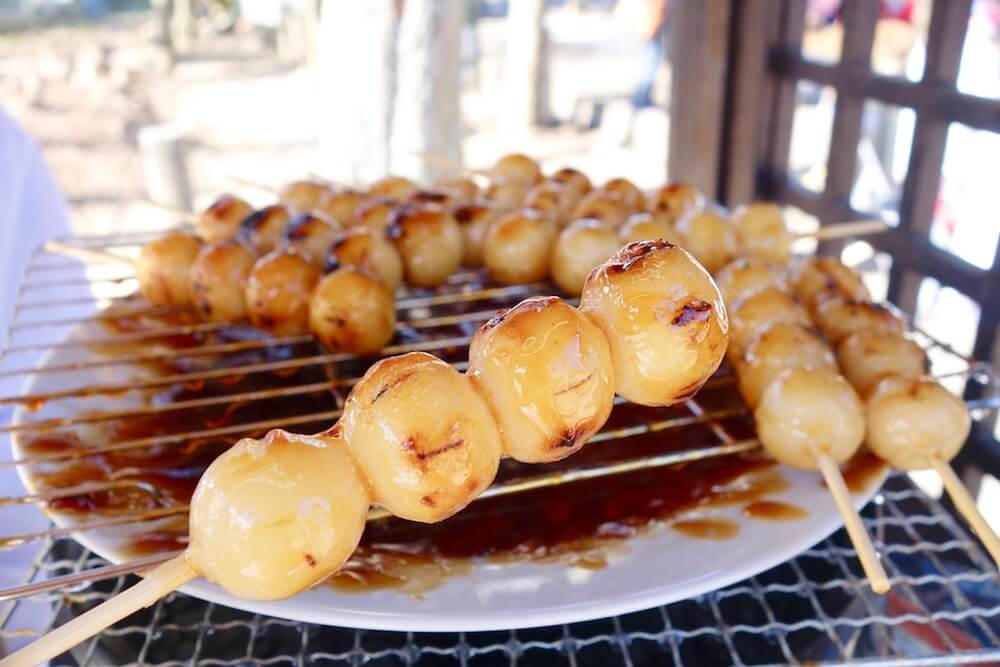
Grab yourself a stick of Mochi Dango, which is freshly grilled at one of the many roadside stalls.
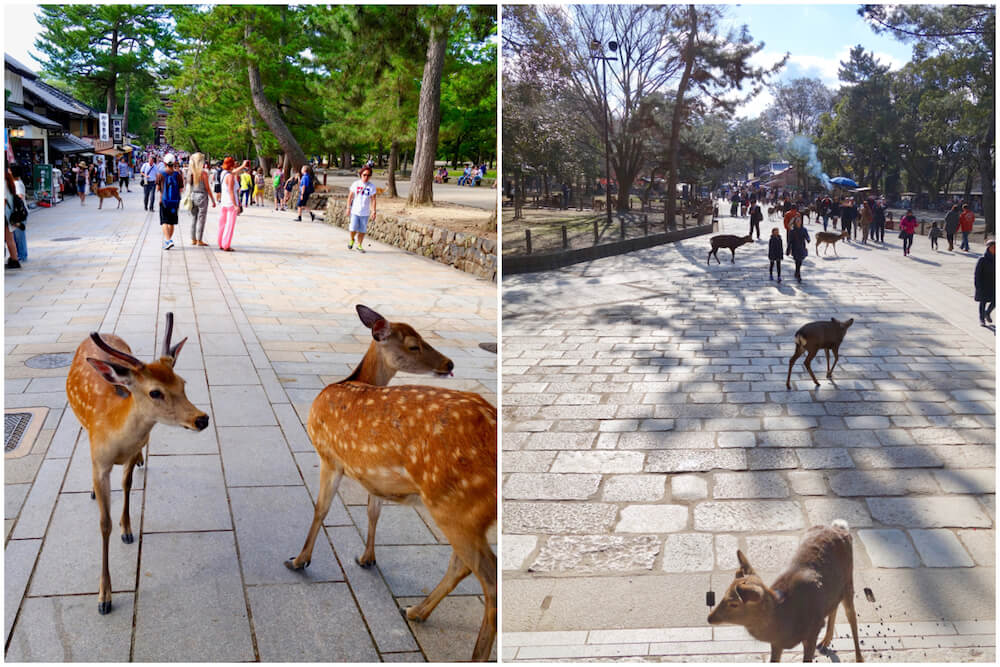
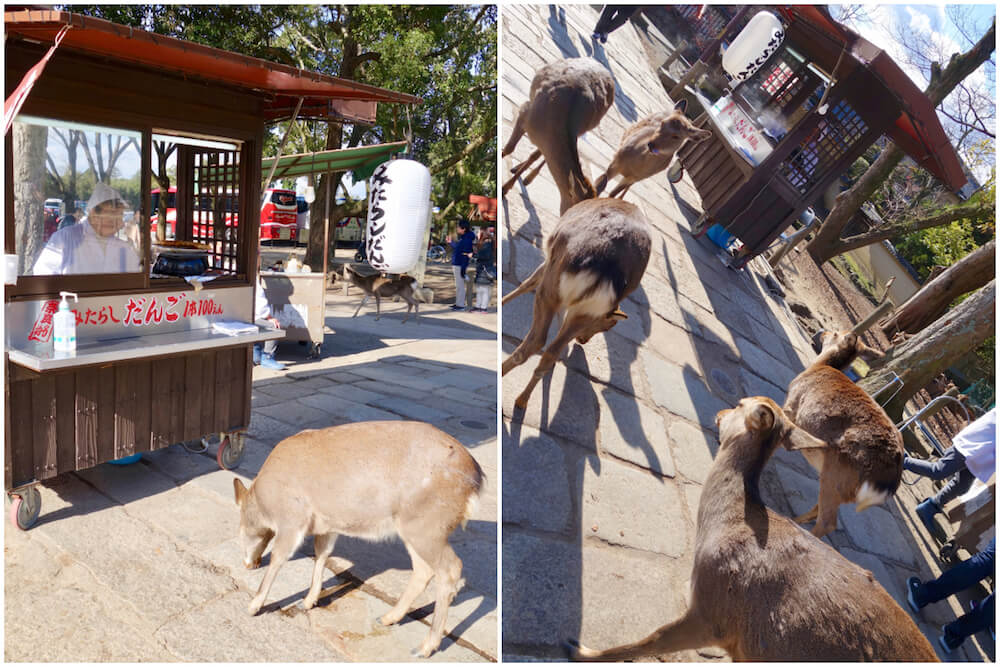
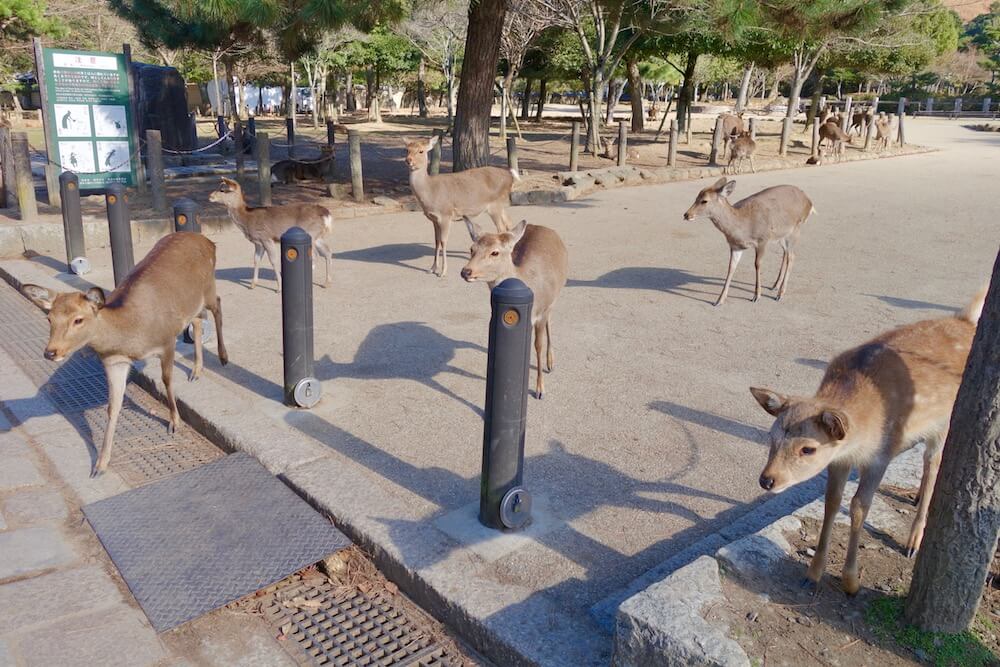
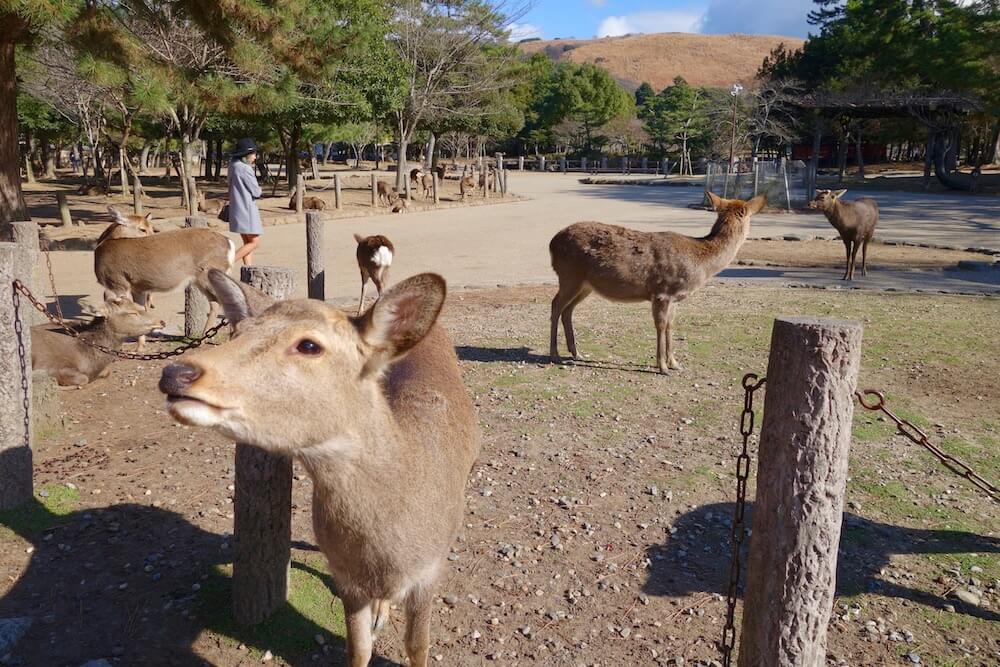
You’ll find plenty of deer roaming the street outside the shops as well. They’re basically everywhere!
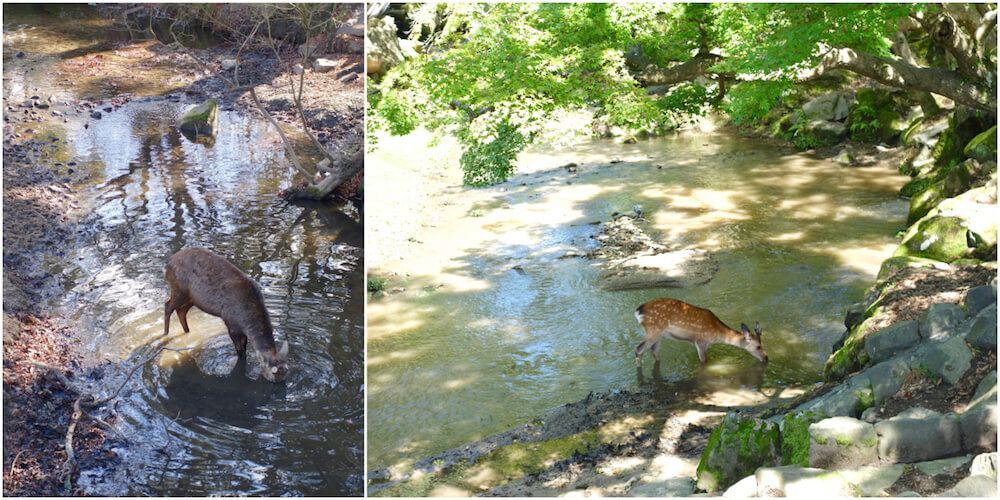
On a hot day, you’ll also be able to spot some of these deer cooling themselves down in a small stream.

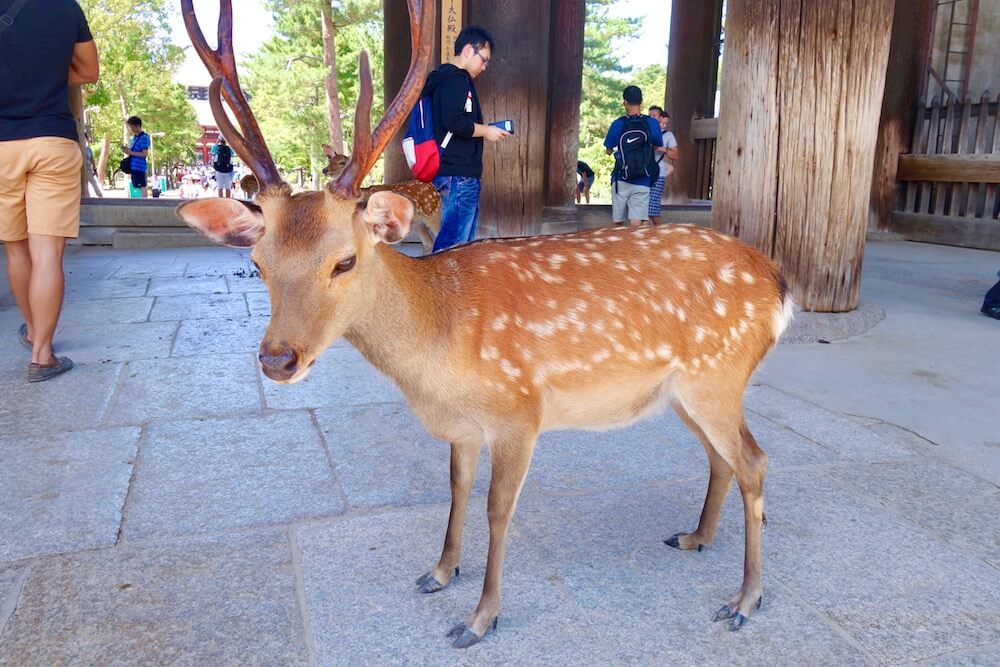
The Nandaimon Gate is the main gate of Todaiji Temple and comprises Japan’s largest temple entrance gate. And yes, you’ll find some deer at the gate as well!
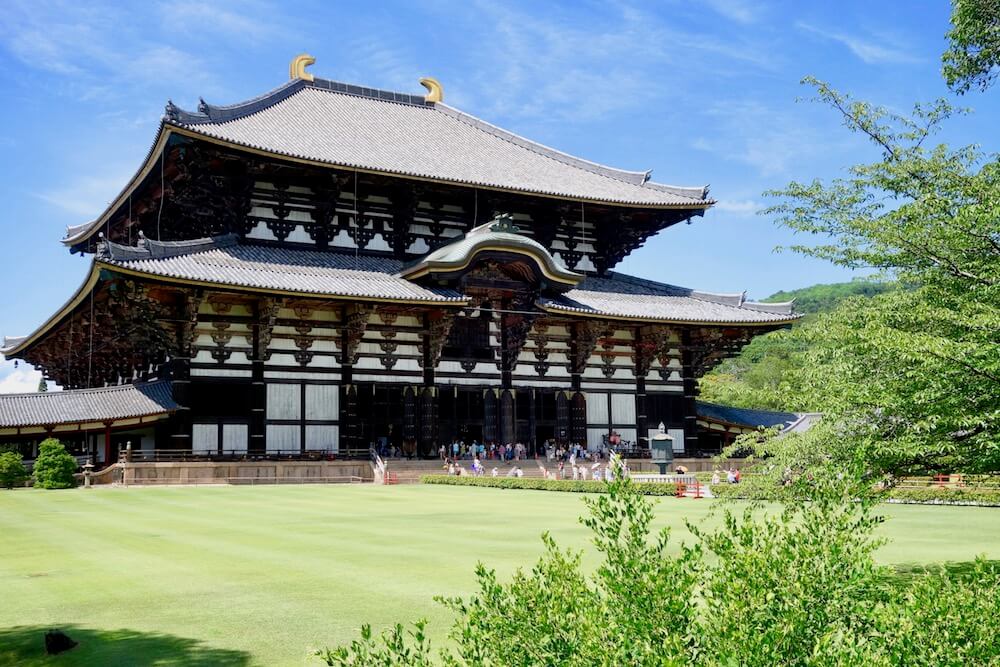

Besides being known as the world’s largest wooden building, the Todaiji Temple is famous for its Great Buddha Hall which was previously destroyed twice by fire. The temple has been designated a UNESCO World Heritage Site and comprises the headquarters of the Kegon school of Buddhism. The Buddha statue in the temple is even said to be the world’s largest bronze Buddha statue, which stands at a height of 14.8 metres.
From November to March, the temple is open from 8am to 4.30pm daily; and 7am to 5pm from April to October. A ticket for the Great Buddha Hall costs 500 yen (~SGD6.50), with an extra 300 yen (~SGD4) top-up for the Todaiji Museum.
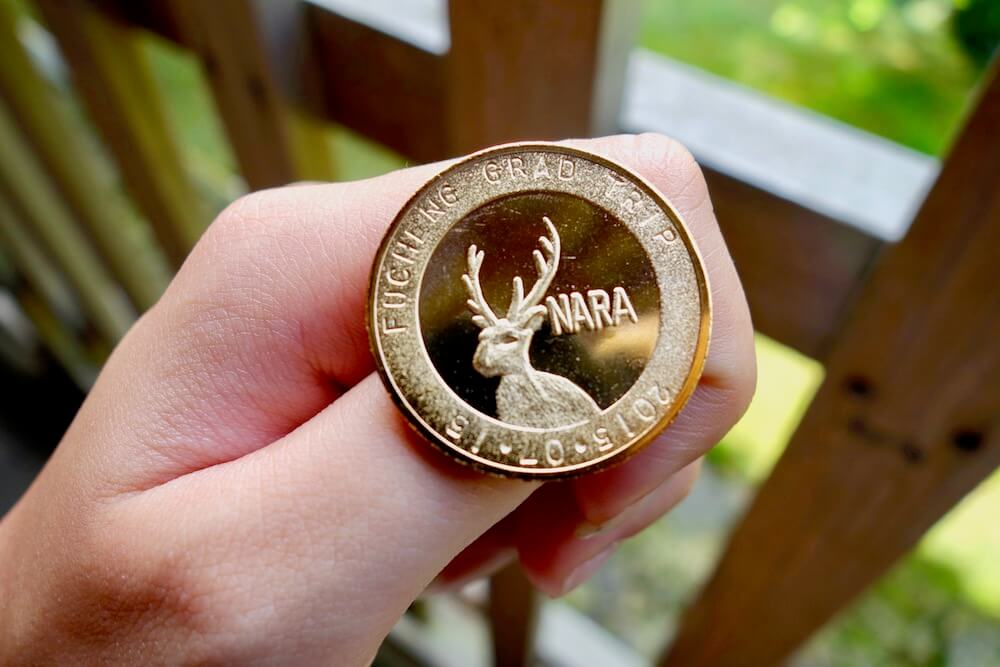
Besides Todaiji Temple, do pay a visit to Kofukuji Temple as well. Before you leave, don’t forget to get yourself a commemorative engraved coin!
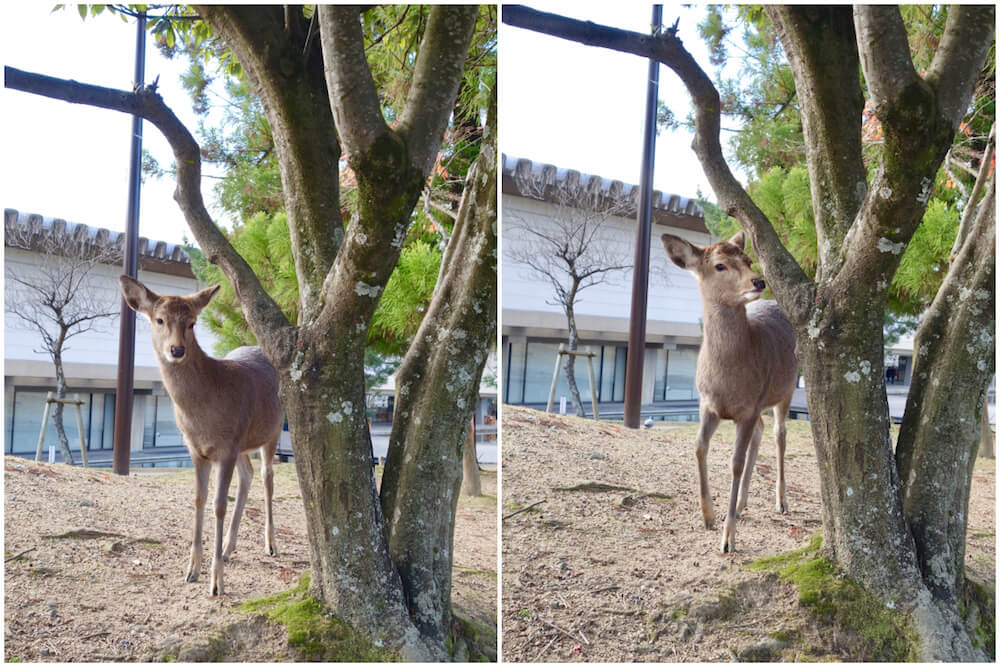
All in all, a visit to Nara can be a fun and enriching experience – as long as you keep your wits about you and respect the animals at all times. After all, the deer are just cute and curious creatures that won’t harm you unless they’re provoked!
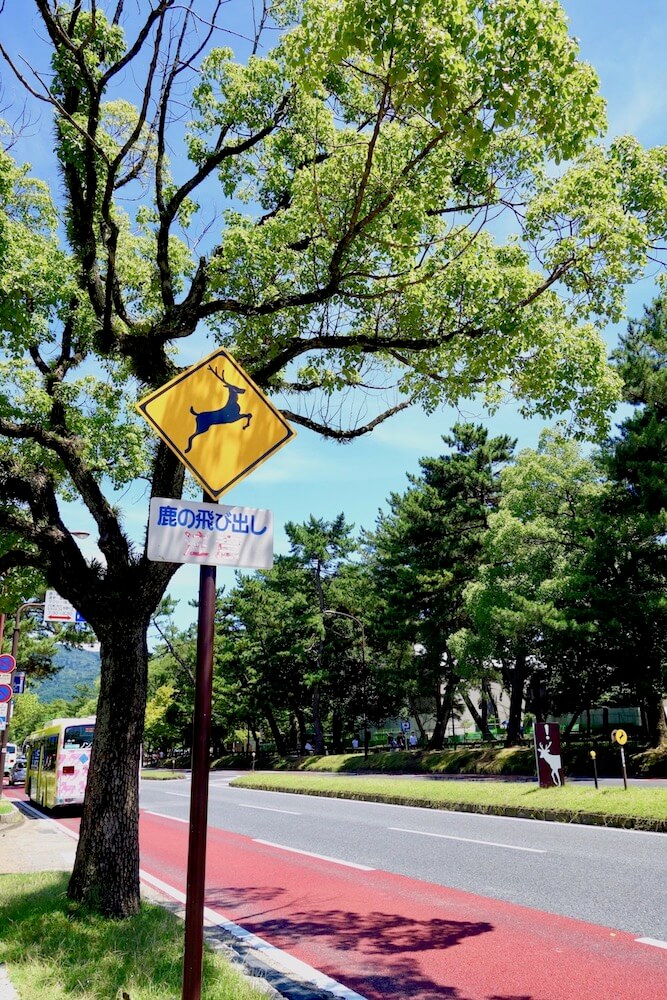
Nara is located about 45 minutes from Kyoto via one of the rapid JR Nara Line trains. It’d take about 1 hour from Kyoto if you choose to travel on the regular local line. I recommend taking the Kintetsu Kyoto Express, which will bring you to Kintetsu Nara station. This station is only 5 minutes by foot from the deer park; as compared to the JR Nara station which is about a 20-minute walk from the deer park.
If you’re coming from Osaka, the Yamatoji Rapid Osaka Station will have you in Nara in 50 minutes.

0 Comments Add a Comment?